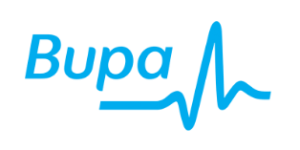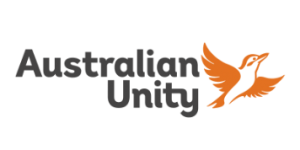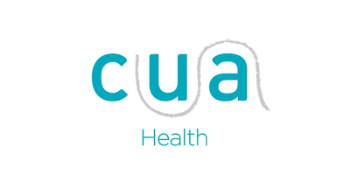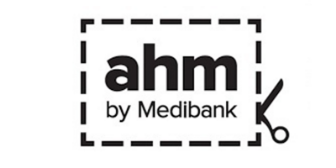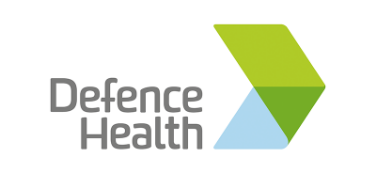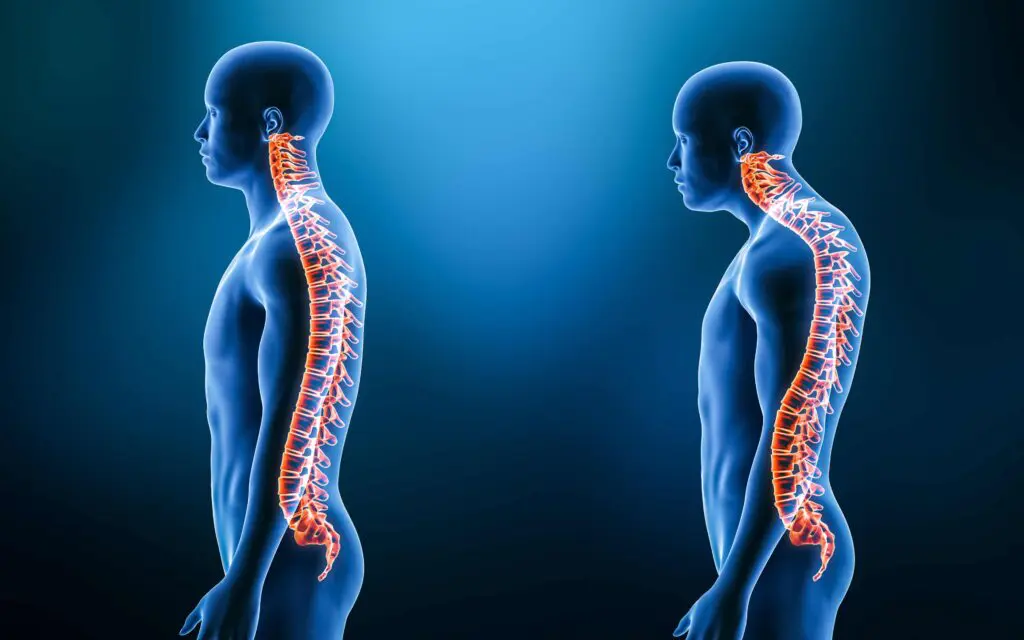
Welcome to our in-depth exploration of hyperkyphosis. Often a point of concern, many ask, “Is hyperkyphosis bad?”
To understand this, let’s first define what hyperkyphosis is, look at the different causes and types of hyperkyphosis and their associated symptoms. We’ll also discuss the available treatment options depending on the severity of this postural imbalance and how posture correction Myotherapy treatment program can help you minimise hyperkyphosis.
What is Hyperkyphosis – is Kyphosis Bad?
Your spine has natural curves, which support your posture and help you stand straight. While a certain degree of curvature in the thoracic spine is normal, known simply as kyphosis, an excessive forward curvature going beyond the normal range (which is between 20 and 40 degrees) is classified as Hyperkyphosis. This can lead to a visible hunchback appearance, particularly in severe hyperkyphosis cases and may require further assessment and management.
What Causes Hyperkyphosis?
Hyperkyphosis of the thoracic spine, characterized by an excessive forward curvature of the upper spine, can be caused by a variety of factors:
Functional problems: Poor posture, and low muscle tone. Repeatedly sitting or standing with poor posture can lead to a weakening of the muscles and ligaments supporting the spine, contributing to hyperkyphosis.
Structural problems: Inherent structural issues in the spine, such as bone growth abnormalities (when one or more vertebrae grow in a deformed manner) or misalignments, can cause or exacerbate hyperkyphosis. One of the examples of structural Hyperkyphosis is Scheuermann’s disease.
Spinal injury: Trauma to the spine, such as fractures or dislocations, can also lead to hyperkyphosis.
Age-related factors: As people age, changes in bone strength and muscle tone can increase the risk of hyperkyphosis.
Chronic diseases: Diseases like arthritis and osteoporosis can significantly contribute to the development of hyperkyphosis. Arthritis can deteriorate joints and bones, affecting spinal structure, while osteoporosis leads to weaker bones and spinal compression fractures.
Neuromuscular conditions: Conditions such as cerebral palsy can affect the muscles and nerves that support the spine, potentially leading to hyperkyphosis.
These factors can act independently or in combination to cause hyperkyphosis. The specific cause and severity of the condition can vary greatly from person to person.
Types of Hyperkyphosis
Depending on the causes, there are a few types of hyperkyphosis, the most common of which are:- Postural Hyperkyphosis is common in adolescents and young adults, caused by poor posture, leading to a smooth, rounded upper back. Correctable with posture training and exercises.
- Scheuermann’s Hyperkyphosis is a structural deformity in adolescents, resulting in a sharper, angular spinal curve. Less flexible and can be severe.
- Age-Related Hyperkyphosis is often seen in older adults and linked to spine degeneration due to conditions like osteoporosis and arthritis.
- Congenital Hyperkyphosis – present from birth, caused by abnormal spinal development during fetal growth, potentially worsening over time.
Book your Posture Correction Myotherapy session NOW!
What are the Symptoms of Hyperkyphosis?
The symptoms of hyperkyphosis can vary depending on the severity and underlying cause of the condition and may include: It’s important to note that the presence and severity of these symptoms can vary widely among individuals with hyperkyphosis. Early detection and intervention can help manage symptoms and improve quality of life.Can Hyperkyphosis be Fixed?
Each type of hyperkyphosis has its unique characteristics, and treatment approaches. Diagnosis typically involves a physical examination and imaging studies like X-rays, and the treatment may include physical therapy, bracing, or hyperkyphosis surgery, depending on the severity and type of kyphosis.
In cases of mild to moderate hyperkyphosis, especially when it’s related to postural issues or muscle weakness, physical therapy is often the first line of treatment. Specific exercises for hyperkyphosis correction are often recommended to strengthen weak muscles and stretch tight ones, which may help improve posture and reduce the kyphotic curve.
What Should and Shouldn’t I Do to Prevent my Kyphosis from Getting Worse?
To prevent your thoracic kyphosis from getting worse and turning into a hyperkyphosis, first and foremost practice good posture while sitting, standing, and walking. Avoid prolonged sitting with poor posture, like slouching or leaning forward, which puts extra strain on the thoracic spine. Use supportive chairs and keep computer screens at eye level.
Second, avoid looking down at phones, tablets, or laptops for extended period – it can promote a forward head posture and strain the upper back.
Poor lifting techniques, especially of heavy objects, can stress the spine and contribute to hyperkyphosis.
It’s very important do regular stretching and posture correction exercises that help with back mobility and strengthening of the back and core muscles. Yoga and Pilates can be particularly beneficial.
Myotherapy Solutions for Hyperkyphosis Treatment and Postural Improvement
Our Myotherapists at Knead Massage are skilled in treating hyperkyphosis, creating personalized posture improvement programs that blend manual techniques with exercise therapy. We are focusing on addressing muscle imbalances to improve spinal alignment and providing a customized exercise plan to target your postural asymmetries. Even in individuals at risk for hyperkyphosis but not yet showing severe symptoms, Myotherapy can serve as a great preventive measure.
- Thorough assessment of posture and movement
- Massage to release tight muscles and fascia
- Joint mobilization and stretching for increased mobility
- Corrective exercises and strengthening for postural control
- Individualised posture correction exercise plan and ergonomics advice
Frequently Asked Questions (FAQs)
In hyperkyphosis, several muscle groups are involved, particularly in the upper back and chest. The paraspinal muscles, which run along the spine, are crucial for maintaining alignment and upright posture. Tight pectoral muscles in the chest can exacerbate a forward-rounded posture. The rhomboids and trapezius muscles in the upper back play a key role in scapular stabilization. Addressing these muscle groups through strengthening and stretching is important in managing hyperkyphosis.
To fix poor posture and increasing thoracic kyphosis, focus on strengthening and stretching exercises. Strengthen your back muscles with exercises like rows and reverse flys. Stretch tight chest muscles with doorframe stretches. Additionally, incorporate postural awareness into your daily routine while sitting, standing, and walking.
Myotherapists at Knead Massage & Myotherapy can perform a thorough posture examination and analysis and offer you an individualised plan on Postural Improvement.
Yes, poor posture can contribute to headaches. Slouching or maintaining an incorrect head position, especially when using devices or reading, can strain the muscles of the neck and shoulders. This strain can lead to tension headaches, often characterized by a dull, aching sensation around the forehead or the back of the head and neck. Proper posture, combined with regular breaks and stretches, can help alleviate and prevent these types of headaches.
Yes, poor posture can sometimes cause chest pain. Slouching or hunching forward can lead to muscle imbalances and strain in the chest and upper back muscles, potentially causing discomfort or pain in the chest area. Additionally, poor posture can affect breathing mechanics, which might contribute to feelings of chest tightness or discomfort.
Yes, severe hyperkyphosis can reduce lung capacity and have several effects on the respiratory system.
The abnormal spine curvature in hyperkyphosis can limit the expansion of the rib cage, consequently, the lungs may not be able to fully inflate during breathing. This decreases lung volumes, such as vital capacity (the maximum amount of air a person can expel from the lungs after a maximum inhalation).
In severe cases, the reduced lung capacity and inefficient breathing mechanics can predispose individuals to respiratory complications like pneumonia, especially in older adults or those with other underlying respiratory conditions.
Cervical kyphosis, or hyperkyphosis of the neck, involves an abnormal forward curvature in the cervical spine. This condition, which contrasts with the neck’s normal lordotic curve, can arise from factors like degenerative diseases, congenital issues, or trauma. Symptoms include neck pain and stiffness, and in severe cases, nerve function may be affected.
Management and treatment vary based on the underlying cause and severity of the condition and often involve physical therapy, posture correction, and in some cases, surgical intervention.
The reversibility of kyphosis depends on its type and severity. Postural kyphosis, often due to poor posture, can be improved with posture correction exercises, physical therapy, and lifestyle changes. However, structural forms of kyphosis, like Scheuermann’s disease or congenital hyperkyphosis, are generally not reversible, although their progression can be managed, and symptoms alleviated through treatment. Early intervention and consistent management are key factors in improving outcomes. Always consult a healthcare professional for an accurate diagnosis and tailored treatment plan.
Effective exercises for hyperkyphosis focus on strengthening the back muscles and stretching the chest. Three beneficial exercises are:
Wall Angels: Performed standing against a wall, this exercise helps in improving posture and strengthening shoulder and upper back muscles.
Thoracic Extension: Using a foam roller, this stretch targets the thoracic spine, aiding in reversing the rounded back curvature.
Prone Cobra: Done lying face down, this exercise strengthens the muscles of the back and shoulders, essential for better spinal alignment.
For postural assessment and individualised exercise plan – book Myotherapy appointment at Knead Massage Brisbane.
Related Posts
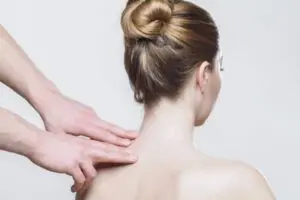
Thoracic Outlet Syndrome Brisbane
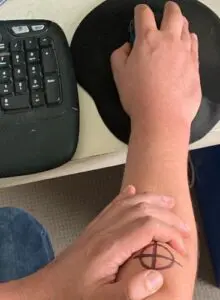
Arm Pain Brisbane

Neck Pain Brisbane

Liza Markova


Latest posts by Liza Markova (see all)
- Hyperkyphosis - September 19th, 2024
- Frozen Shoulder Brisbane - July 3rd, 2024
- Thoracic Outlet Syndrome Brisbane - September 27th, 2022

